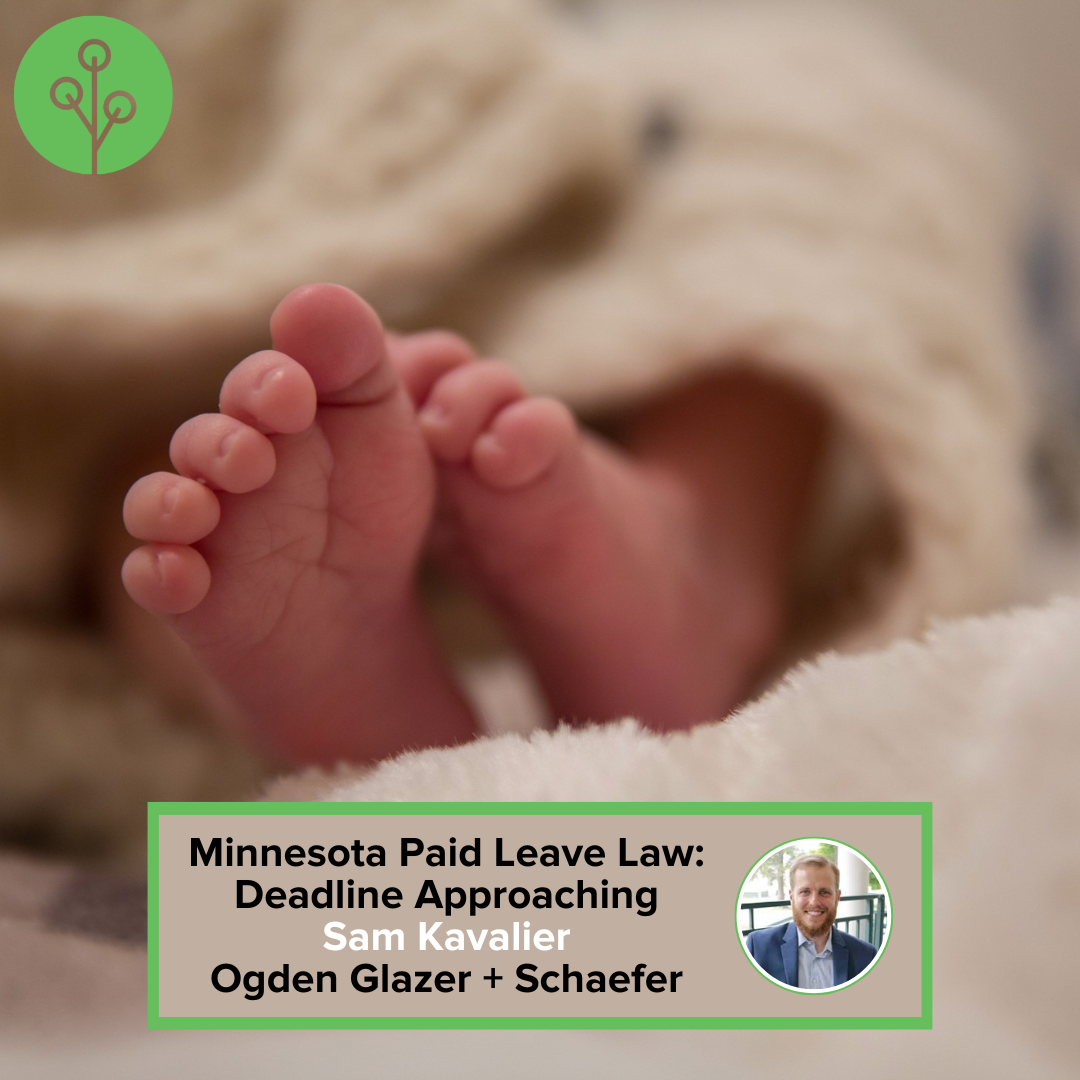Minnesota is one of 13 states with a mandatory paid leave program for employees within its borders. Though the program is officially scheduled to roll out in 2026, there is a pressing deadline coming up at the end of the month. If you are a Minnesota employer, a fellow geek of the law, or just casually interested, read on.
On May 24, 2023, Governor Walz signed HF2, known as the “Paid Leave Law.” The law directs the Minnesota Department of Employment and Economic Development (DEED) to create a paid leave program to be made available to Minnesota employees. Some of the finer details of the program should be a topic for a future blog post.
The program is intended to be operated in a similar manner to unemployment insurance (UI). To explain at a high level, employers in Minnesota (and many other states) generally report employee wages and pay unemployment taxes at a certain rate and at certain intervals (usually quarterly). When a former employee of the employer then claims unemployment benefits, the payment of those benefits is generally funded from the funds accumulated from that employer’s tax payments. Similarly, the Paid Leave Law contemplates a similar program of reporting employee wages and collecting quarterly taxes from employers to fund paid leave for their employees.
You might be wondering “If the program rolls out in 2026, then what is the deadline for October 2024?” That deadline is to create an employer Paid Leave account and file the initial quarterly wage report. For the Minnesota employers still reading, the good news is that if you already file wage reports for Minnesota UI, then DEED has already created a joint Unemployment Insurance/Paid Leave account for you, and your quarterly wage report will meet the requirement for both UI and Paid Leave. If you are an employer that is exempt from UI, then you may be required to set up a separate DEED Paid Leave account and report. The exemptions for Paid Leave reporting are narrower than UI reporting, and generally include just federal/tribal government employees and self-employed persons.
Now that we have discussed the reporting deadline, you might be wondering “Why now, especially if the program does not roll out until 2026?” In short, the aim of this pre-rollout reporting is to provide accurate data to facilitate a more successful rollout of the program. These reports will be particularly helpful for two purposes:
- Determining individual benefits. The Paid Leave Law’s formulas for calculating benefits depend on the wages reported in the previous 4 quarters of the benefit period. By collecting the wage reports starting now, DEED will have those previous 4 quarters of data to run those calculations.
- Set appropriate tax rates for Paid Leave.The cost of providing Paid Leave is somewhat difficult to determine, especially prior to rollout. DEED wants to set a rate high enough to adequately fund the program, while remaining low enough to avoid being overly burdensome on employers. Using these several previous quarters of wage reports, DEED will have more data points to help inform where tax rates should be set starting in 2026.
To close, I would offer the following takeaways:
- If you are a Minnesota employer, check to make sure that you are properly enrolled for UI in Minnesota. If you are an employer exempt from UI, make sure you are registered with a Paid Leave account.
- Assuming you have enrolled in either a joint UI/Paid Leave account or just a Paid Leave account, make sure you have filed your quarterly report by the upcoming deadline. Note: the upcoming deadline merely requires that the report be filed, not that Paid Leave taxes be paid. Those will come later.
Thanks for reading! Be on the lookout for future blogs on the topic.

